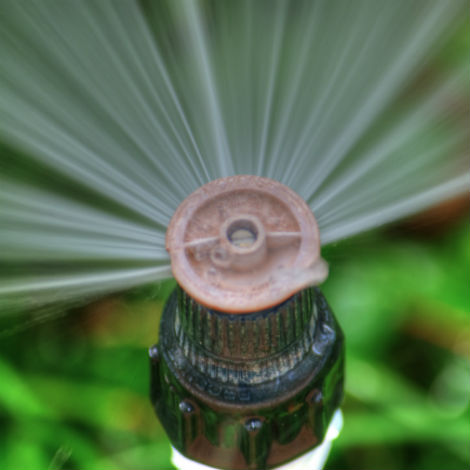Not all sprinkler heads are created equal. From rotators and sprays to drip and bubblers, they all provide different methods of watering.
As we take advantage of the dormant season to begin planning our spring landscaping goals, it’s always a good idea to check for and correct any problems with your in-ground sprinkler system.
While common issues like clogged nozzles, broken heads and overspray are all relatively obvious, mixed heads or mixed zones are routinely overlooked. Simply put, mixed heads/zones occur when one irrigation zone contain various different irrigation components. For example, a zone with both spray heads and rotator heads watering at the same time.

Here’s why this is a problem. In the world of irrigation, not all nozzles are created equal. From rotators and sprays to drip and bubblers, many heads, nozzles and emitters provide vastly different methods of watering and often equally different precipitation rates (inches of water per hour delivered).
For example, a spray head nozzle, which sends out a constant sheet of water designed to irrigate an entire area all at once, may have a precipitation rate of two inches of water per hour. But a rotator head, generally designed to water larger areas by sending out a smaller but longer stream of water while slowly rotating back and forth, may have a precipitation rate of only 0.4 inches of water per hour.
If these two are located in the same zone and it’s programmed to run for 20 minutes, the area being watered by spray heads will receive 0.66 inches of water whereas the area watered by the rotator head will only receive 0.13 inches of water in the same amount of time. Alternatively, if the run time is scheduled to accommodate the slower rotator heads, we would be way over watering with the spray heads.
That’s why it’s important to be extra cognizant of what components are in use before repairing or retrofitting your sprinkler system. Sometimes even the smallest changes can lead to significant problems.
The best solution is to not mix components. But if that can’t be avoided, make sure they all have a similar precipitation rate.


